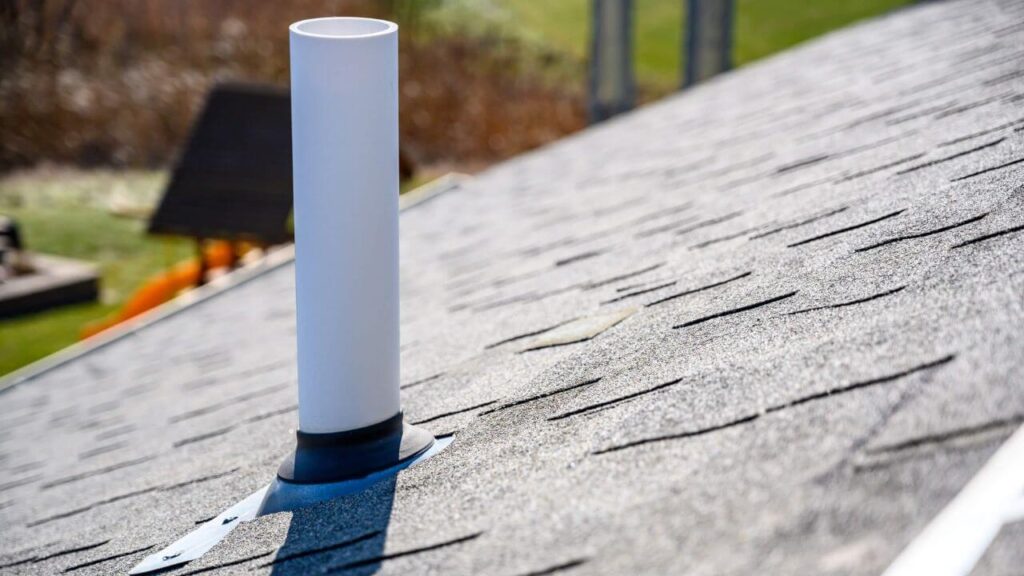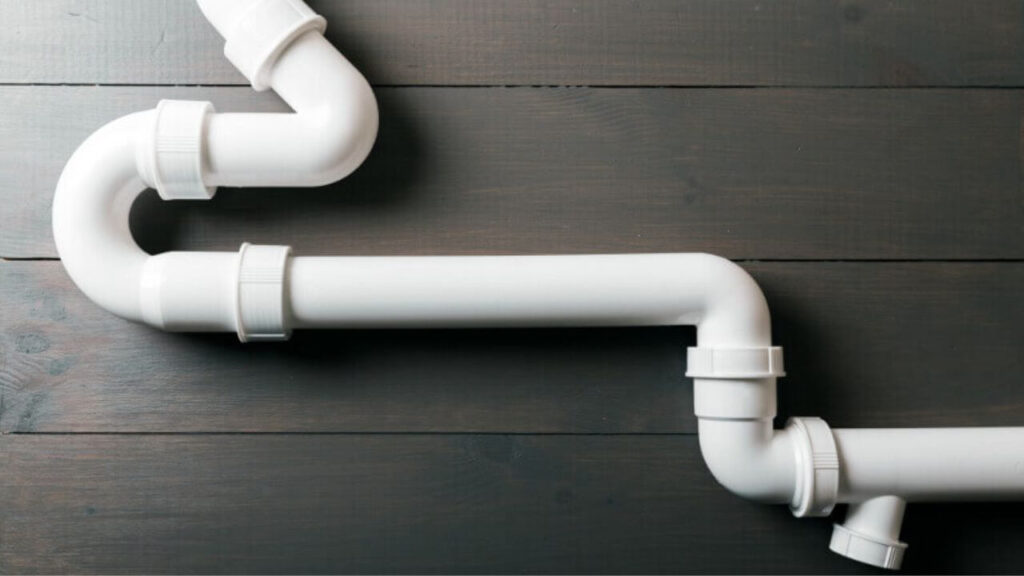Can you imagine coming home to your house engulfed in the smell of sewage and water flooding everywhere? It’s a nightmare no one wants to experience.
Yet, that was precisely what happened to me one night when my toilet started overflowing due to a clogged vent.
After calling emergency plumbing services, they told me why this had occurred and how I could ensure it didn’t happen again.
In today’s post, I will share the essential lessons I learned that night and tips on preventing your toilets from overflowing if your ventilation is clogged!
What is Plumbing Vent?

But before telling you the exact tips and tricks. Starting this article early is better to ensure everything is covered excellently.
I know many people know what plumbing vent is but for beginners and people who don’t know about this little thing, let me tell you shortly.
Plumbing vents are an essential part of any home drainage system. They regulate air pressure in the pipes and keep them from clogging or overflowing sewage, which can damage both the plumbing system and your property itself.
Plumbing vents allow fresh air to enter your pipes and exhaust foul-smelling gas and fumes, improving the overall atmosphere within your home.
Vents also become vital if you’re remodeling a bathroom or area with a different drainage setup – they can help ventilate the space and provide the necessary airflow for proper operation.
Understanding how a plumbing vent works is essential for maintaining a functioning and healthy home plumbing system, so be sure to maintain yours for the best results properly.
Also Read:
Where Is The Plumbing Vent Located?
Now, as you know, the plumbing vent is crucial to your home’s plumbing system. It’s located on your home’s roof; it allows toxic gasses from drains and fixtures to escape.
This helps improve home air quality and prevent sewer gasses from backing into living spaces.
Occasionally, you’ll have to inspect or even clean the vent to ensure it’s working correctly and free your home from potentially hazardous fumes.
What Happens When a Toilet Is Not Properly Vented?
When having plumbing installed in your home, proper venting for your toilet is essential. If it’s not done correctly, you could end up with a few problems:
- Backflow from your plumbing fixtures which can lead to water pressure problems that may cause the drains to run slowly.
- Water backing up into the bowl resulting in unpleasant smells
- Moisture buildup within walls – sometimes even leading to mold – which can cause health issues.
To avoid these issues, ensure you properly vent your toilet or enlist help from a professional plumber. It’s better than dealing with all of the potential problems later!
Can a Clogged Vent Cause a Toilet To Overflow
A clogged or blocked vent can be one of the many things that cause a toilet to overflow. When your vent is clogged, drainage is slow and complicated, thus leading to a situation where your bathroom unexpectedly becomes a swimming pool.
The more pressure builds in the plumbing system due to the slow drain, the greater the chances of an overflow occurring.
If you begin to experience frequent overflows from your toilet, you should check if a blocked vent causes it; other causes, like old or poorly built toilets, sometimes lead to overflows.
Nonetheless, whatever the issue is with your overflowing toilet can be easily fixed with help from experienced plumbers who will ensure all necessary measures are taken for future protection.
Also Read
Can a Bad Flapper Cause a Toilet To Overflow
Signs That Your Plumbing Vent Is Clogged

I know it will surprise you, but a clogged plumbing vent can cause several problems.
From increased water pressure and foul odors to gurgling pipes and bubbling toilets, there are a few tell-tale signs that your plumbing vent is clogged.
Read on if you’re wondering how to know if your plumbing vent is clogged.
Slow Draining Sinks or Toilets
One of the most common signs of a clogged plumbing vent is slow-draining sinks or toilets.
If there is an issue with your plumbing vent, air won’t be able to escape from the drains as quickly as it should, causing water to move slowly through them.
This will cause water to back up in the sink or toilet and can lead to unpleasant odors.
Gurgling Noises
Another sign of a blocked plumbing vent is gurgling noises from your drains.
This happens because air can’t escape from the pipes like normal and causes bubbles to form in the water, creating gurgling noise.
Related Article:
Why Does My RV Toilet Bubble When I Flush
Bad Odors
If there is an issue with your plumbing vent, foul odors can often be smelt from the drain pipes in bathrooms or kitchens.
These odors are caused by bacteria buildup due to a lack of proper ventilation in the pipes.
It’s essential to address this issue quickly as it can worsen if not taken care of properly.
Water Pressure Issues
Another common symptom of a clogged plumbing vent is the low water pressure in your home.
If the pipes leading up to your fixtures are full of air, they cannot move as much liquid as needed—meaning less water pressure overall.
Additionally, you may notice that it takes longer than usual for hot water to reach certain areas of the house because the air has to move out before the hot water can enter.
Bubbling Toilets & Sputtering Faucets
When the air gets trapped in the pipes due to a clogged vent, it can cause bubbles or sputters in your toilet or faucet when you turn on the tap or flush the toilet.
The bubbles come from pockets of air released as water passes through them.
Sputtering usually occurs when air gets trapped in faucets—causing an uneven flow of water and making it difficult for them to work correctly.
How Do You Clear a Clogged Toilet Vent?

There’s nothing worse than a clogged toilet vent. It not only causes unpleasant odors but can also lead to water leaks and other costly damage to your home.
But Fortunately, clearing a clogged toilet vent is easier than you might think. With the right tools and some know-how, you can run your toilet vent smoothly again in no time.
So let’s take a look at these most straightforward steps I always used to deal with clogged toilet vents.
Step 1: Locate the Clog
The first step is to locate the clog. This may be tricky since most toilets have an internal vent system that runs along the walls of your house and down into the basement or crawls space.
You may need to enlist the help of a professional plumber to locate the exact spot where the blockage is located.
If you can find it yourself, mark the spot so that you know exactly where it needs to be cleared out!
Step 2: Clear Out Debris
Once you’ve located the clog, it’s time to clear out any debris causing it.
Depending on what kind of material is causing the blockage, this could involve using a drain snake or auger, chemical cleaners, or even manual labor with a plunger or plumber’s snake.
Make sure you wear gloves during this process for safety reasons!
Step 3: Test Your Work
Once you’ve cleared out all debris, it’s time to test your work. Place a few drops of food coloring down your toilet bowl and wait 15 minutes before flushing.
If there are still traces of food coloring in the bowl after flushing, then your work wasn’t successful, and you’ll need to start over again from step one!
On the other hand, if everything looks all clear after flushing, congratulations—your toilet vent should now be unclogged!
Also Read:
How to unclog a toilet with paper towels in it
How Much Does It Cost To Clear a Clogged Vent Pipe?
Clearing a clogged vent pipe can be an expensive job. It will depend on the circumstances of the issue, such as where it is located and how much work there is to do.
Labor costs alone could range anywhere from $100 to $400 and more, depending on the difficulty of the project.
You’ll also need supplies like plumbing tape, sealants, screws, and any other materials your plumber may need to do the job correctly.
So before you start preparing for a severe expense, contact a qualified local plumber who can determine what’s needed and give you an accurate quote.
Also Read:
Do Hotels Charge You For Clogging The Toilet
How Much Does It Cost To Flush A Toilet
How Often Should Plumbing Vents Be Cleaned?
Plumbing vents are an often overlooked but important aspect of keeping a home or business free from plumbing problems.
To ensure they stay in peak working condition, they should be cleaned out regularly – at least once every several years is recommended.
This will help to remove accumulated debris and prevent clogs from forming due to blockage.
In addition to making sure the vents are working correctly, having them professionally cleaned regularly can prevent unpleasant odors from permeating into the air around the house.
Taking care of your plumbing vents helps keep things running smoothly and smelling fresh.
Bottom Line
So, look at your vents the next time your toilet starts to overflow. They may be clogged and need to be cleaned out. In the meantime, turn off the water to your toilet to avoid further messes.
